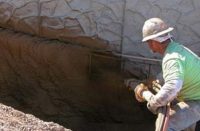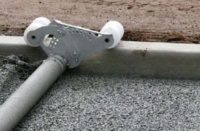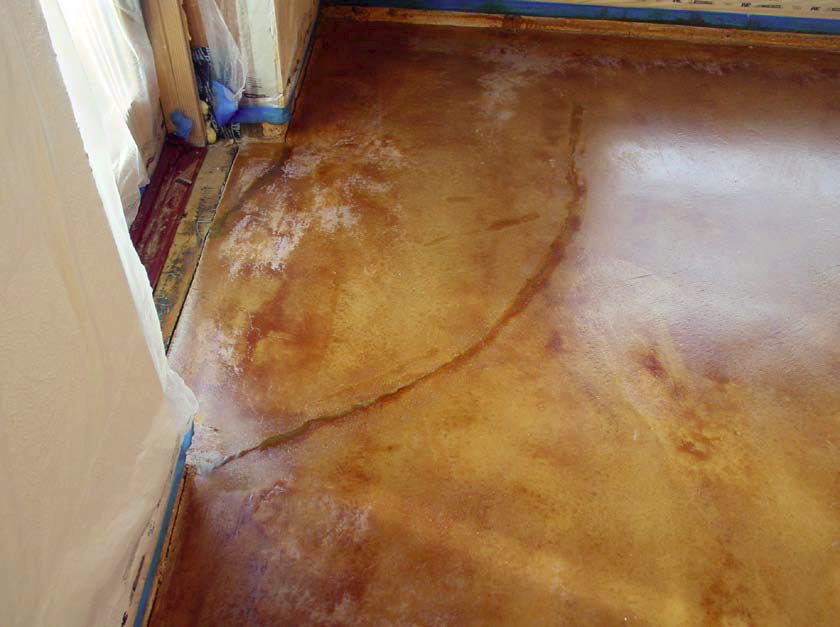
In the Northeast, freezing can be a major problem for decorative concrete. In the South, rain and humidity are the twin devils. In the Southwest, it’s dry air. On the West Coast, there is a moisture problem near the ocean and an entirely different kind of moisture problem in the desert 50 miles inland. Both exterior and interior projects are affected by climate.
For decorative concrete contractors, moisture is a challenge that varies by region. “The big factor in decorative concrete is curing, and the environment is big,” says Chris Sullivan, national sales manager at QC Construction Products. “Concrete cures a lot faster in Arizona, but it doesn’t necessarily cure better. In Atlanta, Ga., there is a lot more moisture in the air and more potential for problems.”
Even within one region, there can be a variety of climate challenges. “The Northeast has four dramatic seasonal changes, which is more of a challenge than California, which is pretty much the same year-round,” says Sullivan.
Climate considerations go beyond the obvious weather challenges such as rain or freezing temperatures. The moisture in the ground itself becomes a regional challenge, whether it’s the porous sand of the Southwest or the hard clay in the South. “You have challenges like water tables that will affect the amount of moisture on the ground,” says Clifford Platt, vice president of Vexcon Chemicals Inc. “You have to deal with moisture above the surface and below the surface.”
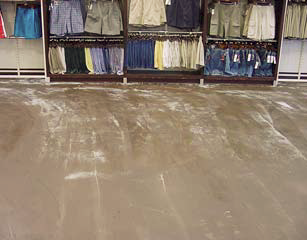
Platt also works with customers to select products according to regional humidity differences.
In the dryer climates of the West, most of the problems with moisture come from sprinklers. Though it may seem like an easy problem to solve — don’t let sprinkler spray extend over decorative concrete — it can be a major problem, since landscaping in dry climates practically requires sprinklers. “When a customer is doing an improvement involving decorative concrete, nine times out of 10 they’re also doing landscaping,” says decorativeconcrete contractor Doug Carlton, who is involved with contractor training at Alternative Finishes in Visalia, Calif. “We help them work through sprinkler problems to make sure they see the adverse reactions when water is constantly being sprayed on the concrete.”
Carlton notes that overspray causes a breakdown in the sealer and also leaves mineral deposits on the concrete. Carlton combats overspray through education. “We have success about half the time,” says Carlton. “Our customers say, ‘Yes, we realize the problem,’ but then we visit their jobs from year to year and see the adverse reactions of moisture on the concrete.”
In northern areas of the country, freezing is a major challenge. “In colder climates, freeze-thaw is one of the worst problems,” says Marshall Hoskins, senior technical representative at Specialty Concrete Products Co. “If the water in the mix freezes, the moisture will expand and exert force within the pores of the concrete. That can cause cracks and even delaminate the concrete surface.” He notes that one solution is to use less moisture in the concrete itself. “We can work against moisture by using water reducers that allow us to pour with less water,” he says. “Another solution is to cover the ground on the day before pouring so you’re not pouring on frozen ground.”
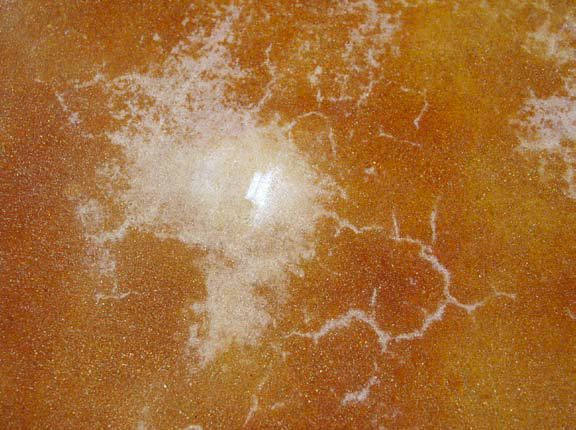
Hoskins says the moisture problem has to be considered job by job. “It’s not just regional, it’s also time of year and type of application,” says Hoskins. Since each region has its own set of challenges, Specialty Concrete works with distributors that know the unique challenges of each region. “We have distributors who know their region and have done this work for years,” says Hoskins.
While there are different types of moisture problems for each region and each season, the solutions are often the same. “If the job is turning white, the problem is the same, the solution is the same,” says Platt of Vexcon. “The cause may be different — maybe they didn’t let the concrete dry out or maybe there is too much water in the ground — but the problem and solution are the same.”
Humidity differences by region are not just an outdoor problem. High humidity also poses challenges with interior projects. “With interior work, moisture can be in vapor. You can’t see it, but it can be strong,” says Sullivan of QC Construction Products. “While interior moisture is less affected by region, it’s still there.”
He notes that industries such as tile, vinyl and wood flooring have dealt with internal moisture for years, but the challenge is relatively new for the decorative concrete industry. “We’re just getting around to dealing with internal vapor or gases,” says Sullivan. “We’re just now seeing stained floors that have been around for five years.”
Each region has its own technical challenges, Sullivan says, and the best way to learn solutions to those problems is to get on-the-job experience in each region. “Unfortunately, most of what we learn is through the school of hard knocks. We have people in every region, and the problems are solved by differences in application procedures.”
